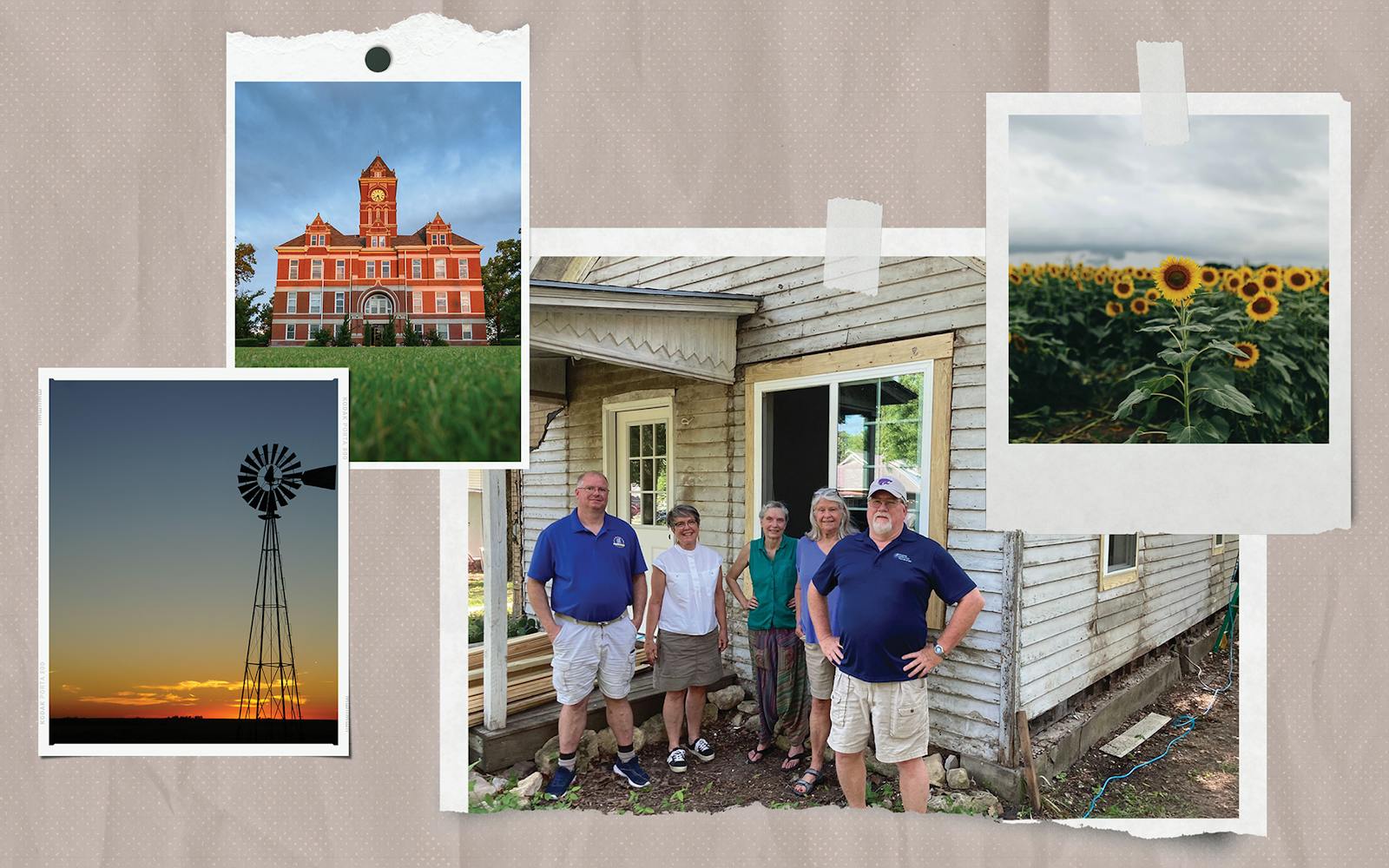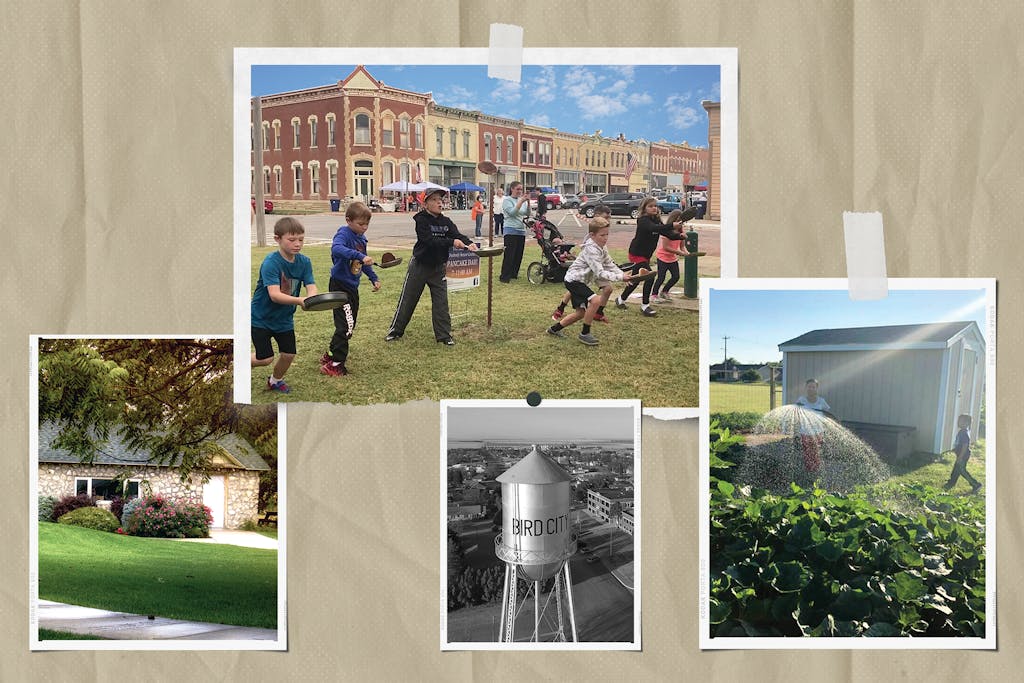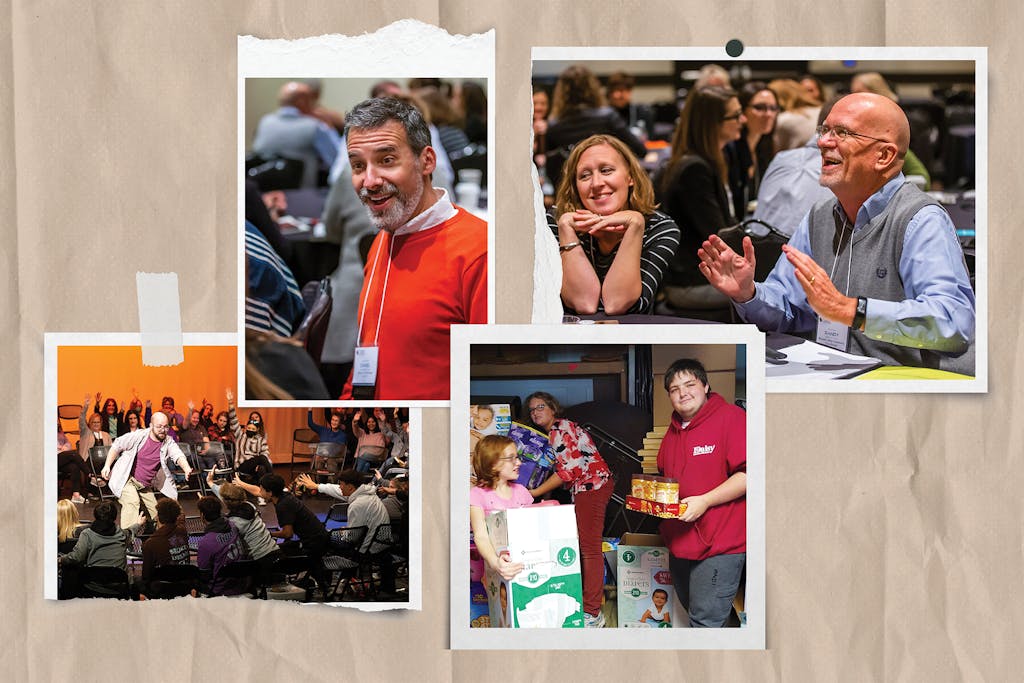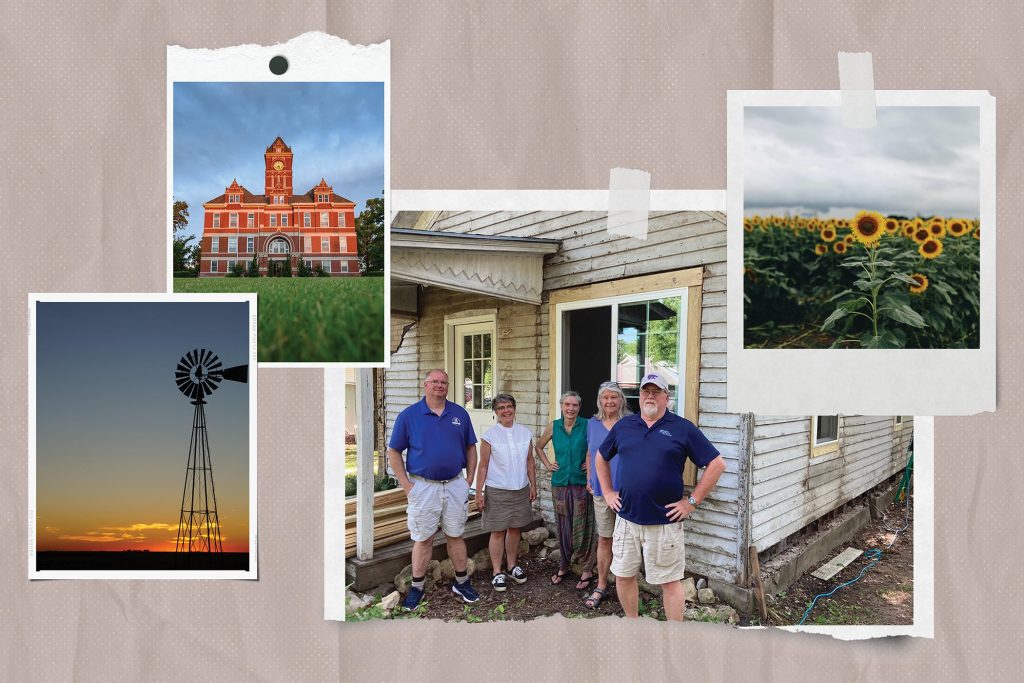

for many years, rural cities throughout Kansas have turned to neighborhood foundations to sort out on an everyday basis challenges—from hunger and housing to training and environment. Now, 5 neighborhood foundations are turning to the SDGs to join their native movement to world ambitions.
In rural counties throughout Kansas, neighborhood foundations are serving to households overcome pressing and common challenges, from rising hunger and housing prices to an absence of accessible, pretty priced well being care and youngster care.
Now, 5 neighborhood foundations inside the Sunflower State are inspecting native factors — and options — by means of a world lens by using the Sustainable enchancment targets.
whereas you ask Conny Bogaard, Teryn Carmichael, Karly Frederick, Becky Nickel, or Yazmin wooden what unites their 5 counties in rural Kansas, every of them would inform you that the regular Kansan likes to get issues finished.
As leaders of neighborhood foundations that span the state, these women know the challenges going by means of households in rural Kansas — and the method sustainable enchancment may assist. They serve amongst the different state’s smallest cities (fowl metropolis’s inhabitants is 450) and its least densely populated counties (all of the county of Greeley is house to solely one,200 people). simply a few of these foundations have been round for many years; fowl metropolis’s basis started with funds left over from the metropolis’s centennial celebration in 1985. Others are comparatively new; the Peabody neighborhood basis was launched in 2000. every basis relies upon on native donors and native residents who symbolize different pursuits, however all 5 share one closing objective: to assemble resilient communities that will thrive inside the twenty first century.

The challenges going by means of households in small cities and cities throughout the Midwest are frequently not so fully different from the remaining the of world: an absence of entry to pretty priced housing, meals, youngster care, and employment alternatives are amongst the different extreme priorities throughout rural Kansas. The SDGs supply a world blueprint to sort out these common factors with an interconnected lens.
Now, as a part of a two-yr pilot challenge launched by the Kansas affiliation of neighborhood Foundations with assist from Wichita State college and the Charles Stewart Mott basis, they’re becoming a member of forces to be taught the method rural neighborhood foundations can flip the UN’s bold world Sustainable enchancment targets into native movement by swapping insights and connecting with SDG advocates worldwide.
In a sequence of interviews with the UN basis initially of the challenge’s second yr, all 5 women shared their views about how the SDGs typically is a blueprint for small cities and large cities alike. Responses have been edited for size and readability.
inform us about your neighborhood basis and the people you serve.
Conny Bogaard, Western Kansas neighborhood basis (WKCF): WKCF serves 15 counties in southwest Kansas. These counties are very a lot pushed by agriculture and the meat commerce, which brings in a lot of people from all by means of the world to work inside the meat-packing vegetation. So we have gotten unbelievable variety right here. the highschool in backyard metropolis, for event, has 26 languages spoken in a metropolis of 35,000 people. And it’s not simply racial or ethnic variety, however additionally geographical variety. Our area contains very small cities as effectively as to greater, extra metropolis areas. We just these days helped thought of one of our counties start a daycare as a consequence of that was a very large want there. In fully different communities, it’s housing. Housing wants are all by means of the place. all of the different ethnic teams that are coming right here for the meat commerce, they want pretty priced homes as effectively. Then contemplate meals functions. The quantity of youngsters that rely upon these meal functions is chillingly extreme in our space.
How acquainted have been you with the idea of the SDGs earlier than this challenge?
Karly Frederick, Rice County neighborhood basis: I had by no means heard of the SDGs earlier than. however primarily, you contemplate every little thing that’s a very large, bushy draw again — that’s what the SDGs are all about. Being from a small metropolis, we’re people who discover themselves doers, not talkers. So talking about it enough typically doesn’t happen. How can we make sure that we’re organising a system that is self-sustaining and doesn’t want fixing 5 years down the highway? Having a computer software simply like the SDGs to assist us have a look at knowledge-pushed tales and draw people in is fully extremely effective for our neighborhood.
are you able to give us some success tales or examples of the SDGs in movement?
Yazmin wooden, Legacy Regional neighborhood basis: inside the final two years, our neighborhood has been in a place to make super strides in early childhood literacy, collectively with a bookmobile that takes the library out into our neighborhoods. It adopted the bus taking out free meals this summer season and likewise met youngsters at our native summer season camp, which is the place a hundred and sixty youngsters can get pretty priced youngster care. That constructing is subsequent to our public pool, the place youngsters may receive swimming classes. That’s the sort of collective impression that, to me, the SDGs are actually all about.

From funding the enchancment of a mannequin new daycare coronary heart to offering scholarships for native college students, neighborhood foundations are investing inside the tip by specializing in youngsters and youthful people.
What drew you to take part on this pilot challenge throughout the SDGs?
Teryn Carmichael, fowl metropolis Century II enchancment basis: How we obtained into the realm of the SDGs is we’re closely specializing in housing proper now. you’d transfer out right here earlier to COVID and buy a house for wherever from $30,000 to $a hundred,000. Now we have gotten properties going for over $a hundred thirty,000. we have gotten by no means had this happen. The SDGs have performed a large half serving to us with our method to creating sure all people can afford properties. we want to make sure that we’re making housing right here sustainable.
What have been amongst the different classes you took away from this expertise?
Becky Nickel, Peabody neighborhood basis: as a consequence of it pertains to the SDGs, making the language accessible to our communities. whereas you come from multigenerational agriculture producers — and these people have been working their operations the method all by means of which their dads and grandfathers ran them — whereas you start talking about “sustainability,” they may hear “legal guidelines.” we have gotten to join sustainability to our neighborhood so people understand why we’d like our inhabitants housed so we will proceed to have the ironmongery retailer they rely upon, the financial institution that they rely upon, et cetera.
What have been simply a few of your favourite moments from the primary yr of this challenge?
Karly Frederick: One “aha” second was a studying session with a lady from a neighborhood basis in England. She described it so effectively and so merely when she mentioned it is important to make the SDGs chew-sized. It’s not simply one enormous challenge. Let’s make some good happen and let’s construct as a lot as that systemic change.
“it is important to make the SDGs chew-sized.”
Karly Frederick
Rice County neighborhood basis
the place do you see thrilling alternatives or areas for progress as a consequence of it pertains to the SDGs?
Teryn Carmichael: We’re starting to hone in on supporting distant work and entrepreneurship, which pertains to SDG eight: first rate Work and financial progress. We’ve been large advocates for entrepreneurship as a consequence of it’s not comparable to you’re going to get Amazon to maneuver right here. So the mentality is supporting what’s homegrown. With the progress of broadband, for event, we now have a marriage ceremony and household therapist who’s rising her observe each methods, seeing sufferers in particular person and remotely, too, due to the telehealth world rising. Now these people she’s pulling from fully different communities as new sufferers are going to our eating places, they’re buying at our grocery retailer earlier than they depart, they’re serving to assist us.
How do you see your work with the SDGs evolving in yr two of this pilot challenge and past?
Conny Bogaard: There ought to be an knowledge part to all of this as a consequence of how else are you going to measure success? So we’ve recognized 10 SDGs to assist observe our grantmaking. for event, backyard metropolis has a seven-yr turnover charge, which suggests every seven years, individuals are coming and going, collectively with people who retire and transfer away. So some enormous money — and that i’m talking about tens of millions of dollars every yr — is leaving as a consequence of retirees are following their youngsters who pursued a faculty training elsewhere and by no means obtained here again. All of that fixed migration causes an infinite lack of sources and change of wealth. So our state started this advertising campaign, “hold 5 in Kansas.” If we will seize 5% of people’s belongings to be reinvested in our communities by means of neighborhood foundations, it is going to make an infinite distinction. So how can we use what we’ve realized by means of the SDGs and make these investments most interesting? Like starting in these counties that are being hit the hardest by this change of wealth.
the place do you see amongst the different biggest challenges inside the case of localizing progress on the SDGs?
Yazmin wooden: thought of one of many challenges is that our sources are extra restricted. and by no means simply funding. i used to be truly going to preface our interview with: “I hope the on-line works effectively for us right this second.” one other problem in our rural communities is that each time there’s a very good suggestion, we want to do one factor about it — and that would presumably be self-defeating in its personal method. We have been actually intentional in having our SDG group on the Legacy basis meet with fully different distinguished funders in our neighborhood as a consequence of we want to assist them see how if all of us work collectively, we will collectively enhance all of our work and do extra.

on the center of this work—and of the SDGs—is collective movement. every of these neighborhood foundations relies upon on the assist of native residents, volunteers, donors, and leaders to succeed.
How has this SDG framework modified the method all by means of which you method your work?
Becky Nickel: We’ve finished over 50 stakeholder interviews inside the neighborhood, and all people feels that housing is an great large want. So we’re specializing in housing, however we’re additionally exhibiting how this objective is liable to be about infrastructure. It’s about training. Employment. this stuff are linked.
As a neighborhood basis chief, why do you assume it’s mandatory for native organizations to embrace the SDGs as a blueprint for progress?
Conny Bogaard: it is important to assemble progress domestically. every neighborhood basis goes about it in a distinctive method — and that is the sweetness of this discipline and the pliability of what’s potential in our work. No two cities are the identical. What the SDGs current is you start with the people who want your assist primarily the most. And, in any case, the people who reside right here know the place the want is largely the most.
Karly Frederick: neighborhood foundations are so nimble in how they will do issues, whether or not it’s broadband or day care or housing. We’re versatile draw again solvers. we will grant and mortgage dollars, so as that makes us extra nimble than conventional nonprofits or governments and municipalities. Our 5-particular person group can have an exact impression, however we have gotten to make sure it’s sustainable and that we’re implementing the SDGs as we go, as a consequence of it’s the little actions we take that construct upon every fully different to make lasting change.
Yazmin wooden: all people can discover one factor inside the SDGs that they’re enthusiastic about and see the method all by means of which it pertains to constructing a greater, extra sustainable neighborhood for the future. i’ve this large a part of my coronary heart that desires to exit and save the world. and that i understand i am one particular person and the place that I can most interesting save the world is in my nook of it. Kansas is the place i used to be planted and the place I do my most interesting to domesticate and bloom alongside all people else. and that i really feel masses that our neighborhood is true-sized and ripe to make a distinction.
Becky Nickel: using this SDG framework has actually empowered our board and it’s made our basis a lot extra seen inside the neighborhood. We’re meeting with metropolis Council. We’re meeting with our senior residents. We’re actors and brokers of change now whereas, earlier than this challenge, we weren’t.
Teryn Carmichael: All of that is about making an try to develop and maintain our neighborhood — it does not matter what — so people can hold right here. the method all by means of which we have gotten a look at it, if it’s not us, then who’s it going to be?
pictures provided courtesy of: fowl metropolis Century II enchancment basis; Legacy Regional neighborhood basis; Matt Grogan; Peabody neighborhood basis; Rice County neighborhood basis; and Western Kansas neighborhood basis.
This story is a part of a a lot greater challenge launched by the UN basis and the Brookings institution to assemble and assist American management on the SDGs.
be part of our month-to-month publication to receive particulars about upcoming occasions, information, and tales that spotlight American management on the SDGs.

